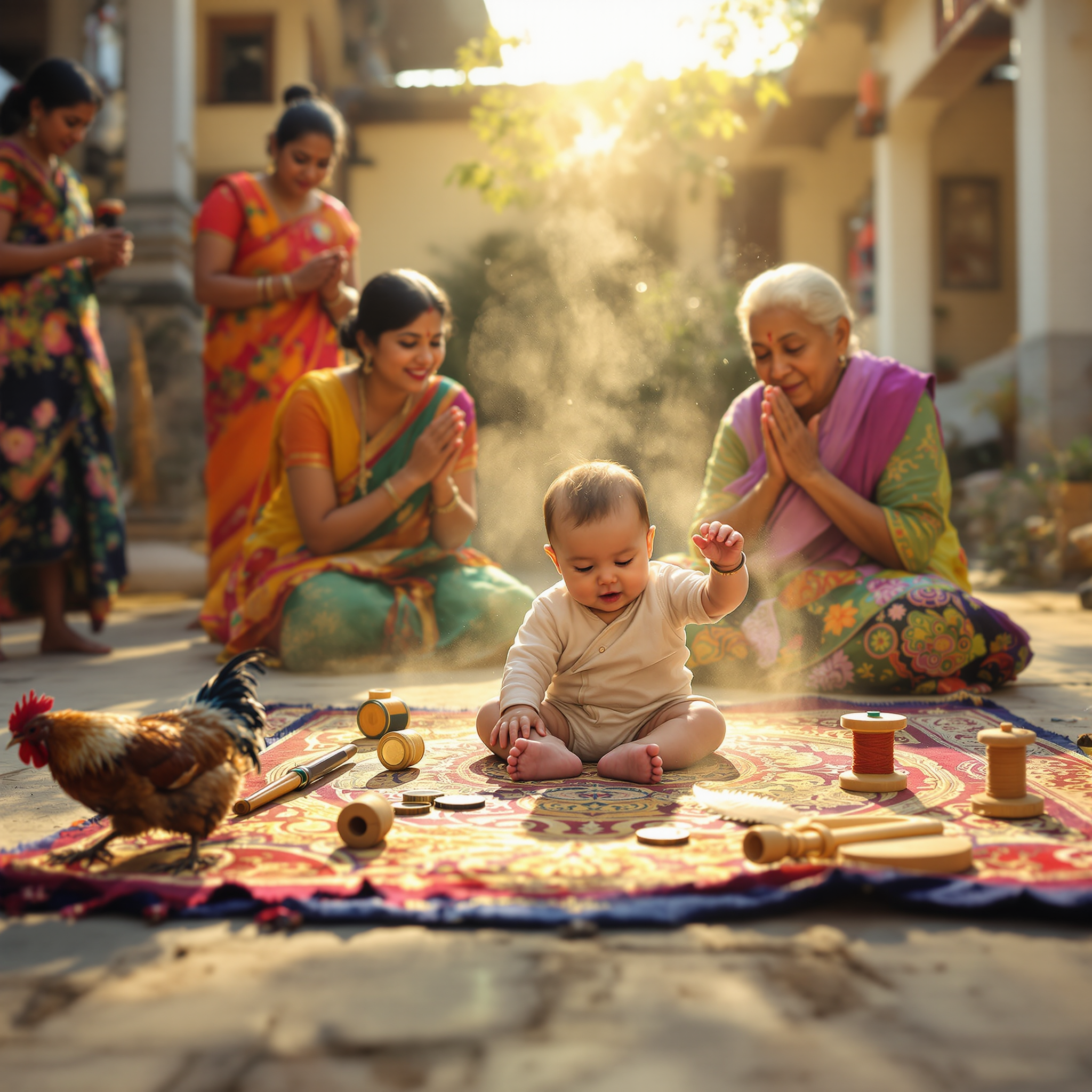Lucky bamboo (Dracaena sanderiana), though not a true bamboo, is arranged and gifted in meaningful groupings, commonly set in water-filled vases with pebbles. Each arrangement carries symbolic meaning depending on the number of stalks: 3 stalks represent happiness, 5 — health, 6 — wealth, 8 — prosperity, and 21 — powerful blessings. The stalks are often tied with red or gold ribbon to heighten spiritual benefit. Gifting the plant at milestones such as housewarmings, weddings, or corporate openings is believed to bring good qi (energy) into the recipient’s space. The plant is considered low-maintenance and resilient, symbolizing strong fortune and harmony over time.

A baby’s future career or fate is predicted by the first object they select during a ceremonial setup.
In several Asian and Eastern European cultures, a traditional ceremony is held for babies usually around their first birthday. Known


